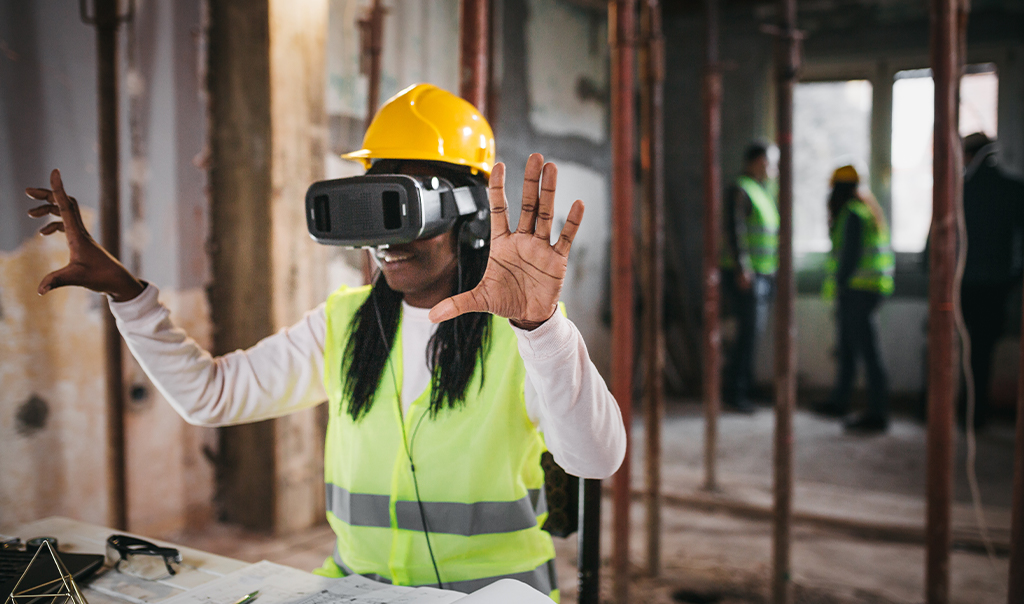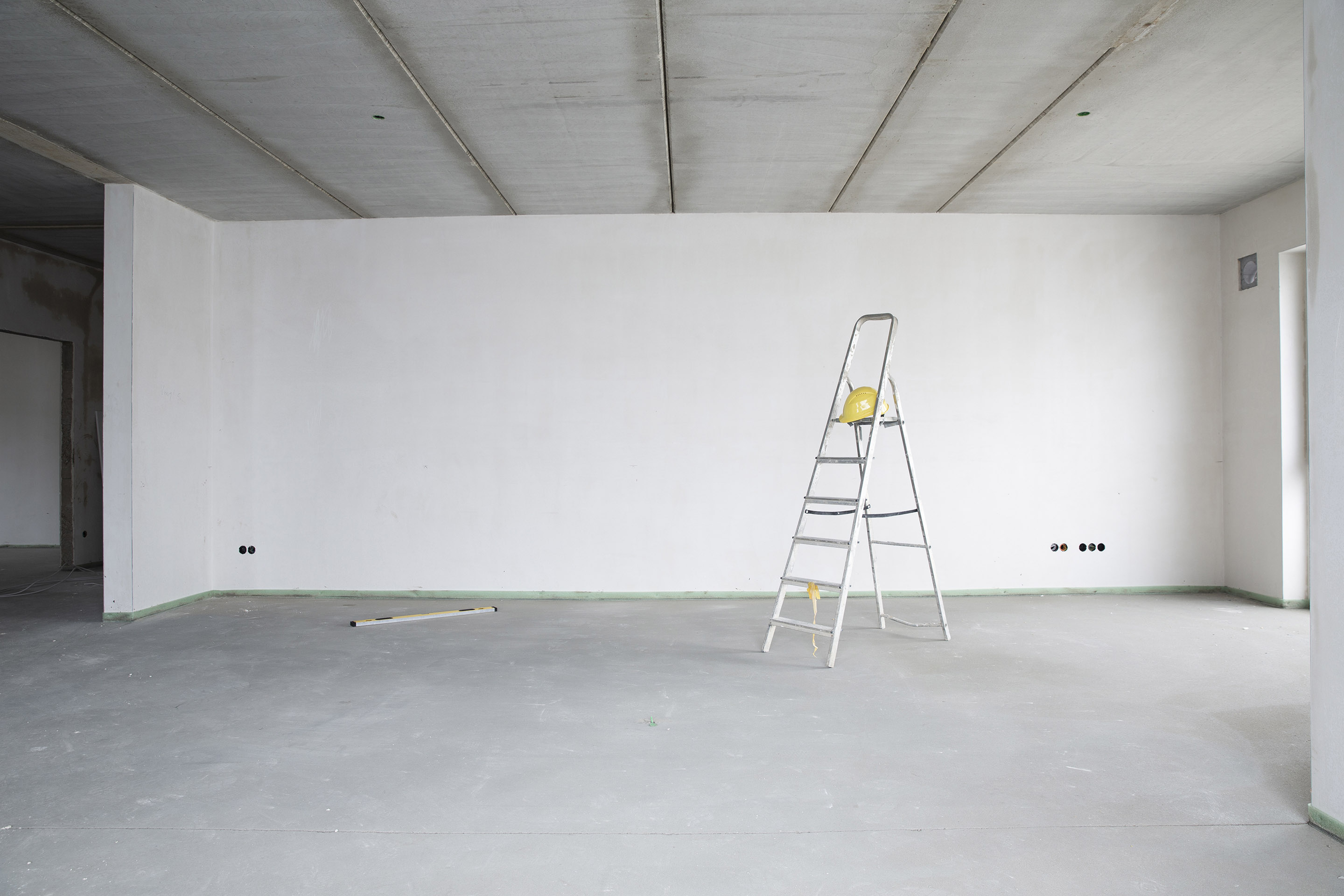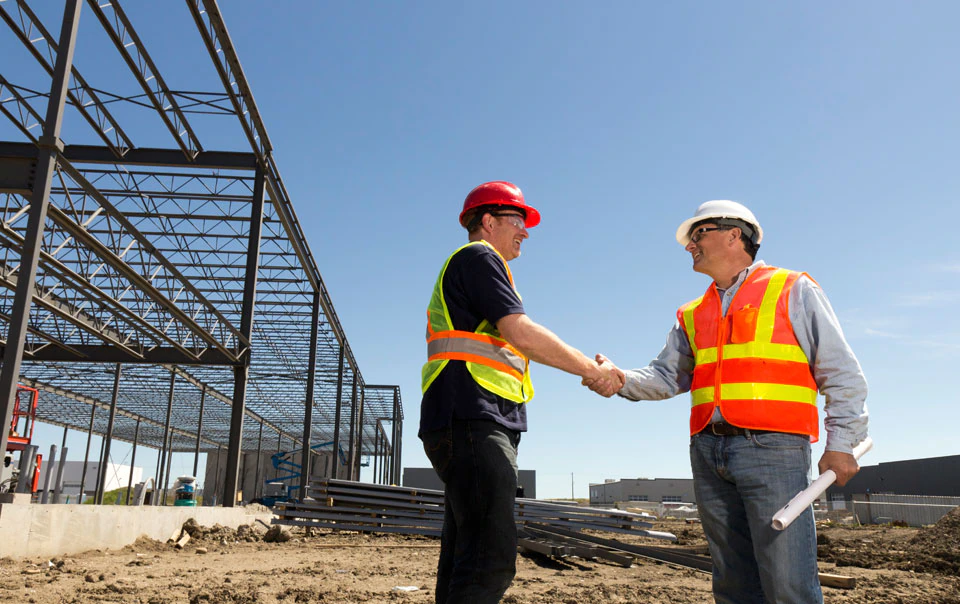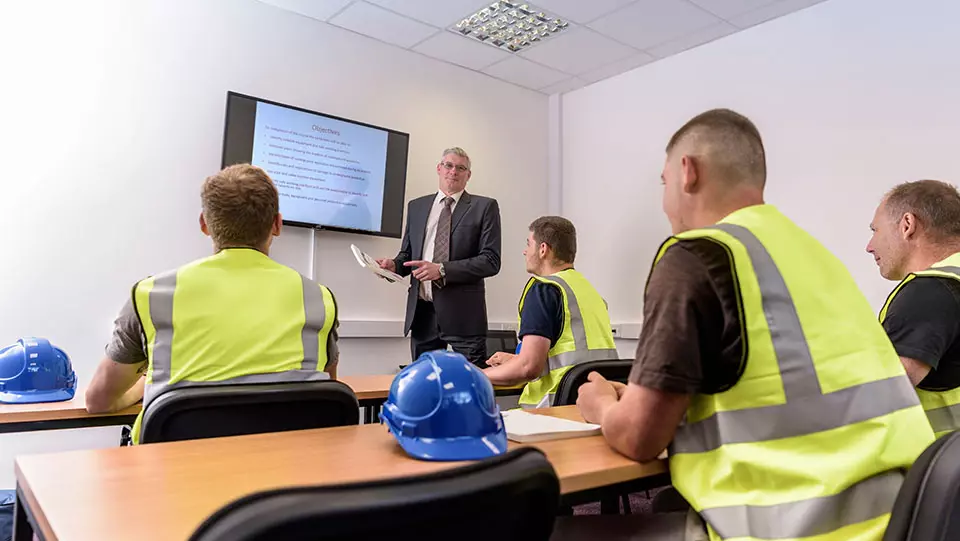5 Innovations Impacting Construction Job Site Safety


Construction job sites can present workers with a variety of hazards, and site safety is a primary concern for workers and industry stakeholders alike. Construction businesses that adopt new innovative technologies, tools and techniques may benefit from not only increased construction job site safety, but also from efficiency, quality and profitability. However, implementing new technologies also has its challenges.
Consider how these five areas of innovation may impact worker job site safety.
1. Augmented reality (AR) and virtual reality (VR)
AR and VR technologies integrate real and virtual world experiences to help improve all stages of construction – and enhance worker safety. Both AR and VR rely on wearable technology, but each delivers a different experience. AR superimposes a digital image or digital information on real-life surroundings. VR creates an immersive experience by simulating an environment or scenario in a fully digital environment.
AR wearables include headsets and smart glasses that contain a camera, display screen and voice-enabled communication. Combined, these components have the potential to help improve job site safety by providing workers with hands-free, visual access to:
- Real-time data when operating, inspecting and maintaining equipment.
- Technical manuals and reference documents.
- Cues about potential hazards, such as the location of leading edges, as well as safety protocols, such as where to clip a safety harness on scaffolding.
- Guidance from remote locations. An electrical technician in need of assistance can connect with a remote expert who can offer precise instructions based on what the technician sees. This remote collaboration saves time and expense for both the contractor and the technical expert.
VR technology offers an interactive environment that can be useful for construction training. Using headsets and apps, workers are immersed in a simulated experience that allows them to practice skills and reinforce knowledge in a safe, controlled environment without exposure to real-life dangers and disruptions.
2. Smart-tech wearables
Tech companies are also adding “smart” features to workers’ standard equipment to help improve job site safety.
- Smart hard hats enable office to field communication and can detect fatigue, signaling workers when it’s time to take a break. When equipped with proximity sensors, these hard hats can alert workers of potential collisions with equipment.
- Wristbands and smartphones can serve a range of job site safety-related functions:
- Monitor health and activity data to prevent overexertion.
- Detect falls.
- Warn electricians of high-voltage electricity sensed nearby.
- Track, monitor and assist lone workers, and locate them should anything go wrong.
- Alert emergency personnel with the press of a button.
- Smart boots can detect falls and shocks and track a worker’s location.

Travelers Innovation Network for Construction
Take advantage of access to and discounts* from this specially curated collection of vendors and resources, available to Travelers customers.
3. Ergonomic innovation
The physical demands of construction work present many hazards. Tasks involving heavy lifting, repetitive motion and work in confined areas can lead to sprains, strains, back injuries and other musculoskeletal disorders. Ergonomic innovations can help reduce the risk of these injuries. In addition to a variety of ergonomically friendly hand tools that have recently been developed, consider how the following incorporate ergonomic innovation to reduce the risk of injury:
- Remote racking of circuit breakers. Traditionally, an electrician would manually rack (move) a circuit breaker to or from an electrical circuit – while standing in front of the circuit breaker. With a remote racking device, electricians can reduce manual material handling and the exposure to potentially fatal arc flashes.
- Pneumatic drywall finishing. Construction workers can use an air compressor-powered system to reduce the effort of finishing drywall manually. This can help minimize repetitive wrist, arm and back movements that can lead to injury and fatigue.
4. Innovation in construction methods
Innovations in prefabrication techniques and modular construction can provide a way forward for contractors looking to deliver projects in a timely and safe manner. Components of a structure are built off-site in a controlled fabrication shop environment, delivered to the job site in pre-assembled components and then connected to the building systems. For instance, electrical panels may be preassembled off-site and hooked up at the active construction site, limiting contractors’ exposure to an inherently risky environment and reducing the amount of time needed for on-site assembly. As innovative techniques advance to allow greater prefabrication of a structure’s components, the possibility for error can be reduced and job site safety enhanced. A few of the job site safety advantages from these innovations include:
- More ground-level work, which can help to reduce the risk of injuries and falls.
- Less exposure to weather-related health risks, such as temperature extremes and high winds, and changing ground conditions that may increase slips, trips and falls.
- Standardized processes and well-organized workflows that lower the chance of being struck by machinery, equipment or other objects.
- Integration of automatic manufacturing methods and robotics that minimize human involvement and thereby reduce the risk of injury.
- Reduced risk of inattention. Workers can focus on one object at a time and not be distracted by many moving parts.
- Greater efficiency, and therefore less time in a potentially hazardous situation.
5. Next generation tools and equipment
Innovation in tools and equipment is a constant in construction, bringing new levels of convenience, safety and efficiency to the worksite. Here’s a sampling of new technologies to watch for:
- Drones are increasingly being used to survey and monitor project sites and inspect tall structures that could otherwise expose construction workers to hazardous conditions.
- Smart lockout/tag-out systems can ensure machines are safely shut down during maintenance. By using Bluetooth technology and multiple layers of digital access codes, it remotely authorizes tag-outs with greater efficiency and less risk.
- Digital technology has brought new effectiveness to tool tracking. Quick Response (QR) tags are a way to track tool inventory and maintenance records. With Bluetooth beacon tags, contractors can monitor the location of field equipment in real time. Radio Frequency Identification (RFID) uses the Internet of Things (IoT) tags to create a full inventory of tools, identify their location and monitor their movement.
Work with a knowledgeable insurance carrier
New technologies and innovation have the potential to improve construction site safety. Even so, construction is a complex undertaking, so it’s important for companies to team up with risk professionals who understand the risks. The right insurance specialists have deep knowledge of construction businesses, the risks they face and the latest tech innovations designed to help them reduce risk and gain operating efficiencies. These risk professionals can help inform you when you’re making decisions about innovative technology solutions.
Given the rapid pace at which technology advances, you’ll want to work with an insurance company that shares its deep risk expertise to help your safety personnel understand the risks and benefits of each tech solution. When it comes to job site safety, there’s no substitute for knowledge and hands-on experience.
Look for an insurance provider with an understanding of construction exposures to help you leverage innovations such as:
- Artificial Intelligence (AI)-assisted ergonomics. These new technologies can help ergonomists better evaluate your workplace and recommend improvements in a matter of hours. Travelers, for example, is the first carrier and one of the few providers with an AI-assisted ergonomic assessment capability that can assess and provide recommendations for workplace improvements to help reduce the risk of injuries, and related costs.
- Wearable technology. These devices can offer advantages such as faster response time when someone has been involved in a fall. They also have a feature that allows workers to press a button and alert the project team of a potential issue or hazard and can deliver insights through worker behavior analytics. Travelers collaborates with select vendors to explore the potential safety benefits and risks of wearable devices on construction sites.
- Safety inspection software. This technology can help you inspect, manage and track workplace hazards before they lead to losses. Travelers continues to evaluate and invest in inspection software technology and shares its experiences and insights with contractor customers to help prevent losses.
Travelers offers expertise and insights on how some of these emerging technologies may benefit your construction company with enhanced job site safety. Learn more about construction innovation and Travelers coverage for construction companies. Ask your insurance agent about Travelers insurance for your construction business.



